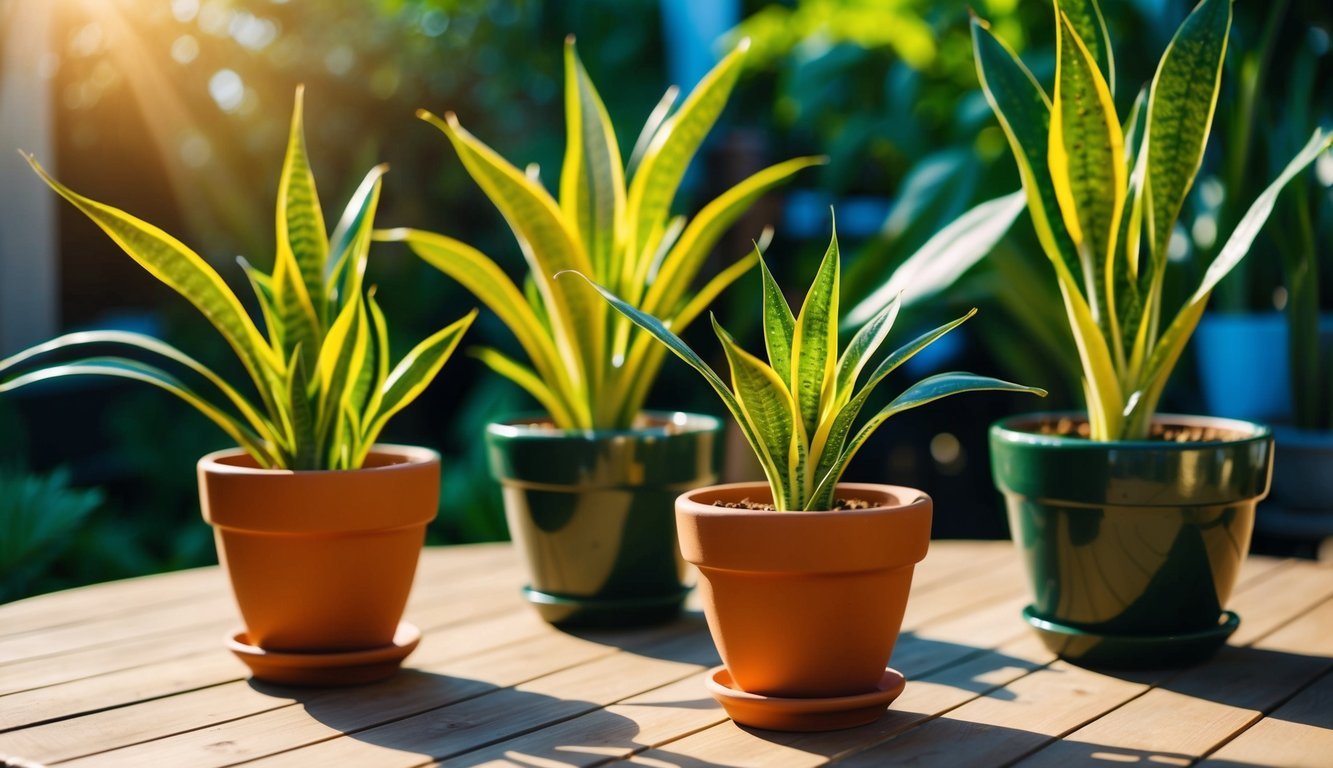
Known for their endurance and adaptability, snake plants make wonderful indoor green companions, capable of thriving even in dimly lit spaces.
Though they’re tough, they can face challenges when kept indoors.
Join plant expert Jerad Bryant as he uncovers five frequent blunders to steer clear of when tending to your snake plants.
These hardy plants, akin to pothos and spider plants, require very little care to flourish, effortlessly surviving in low light with minimal watering.
Snake plants hail from West and West Central Africa, where they naturally thrive under the canopy of larger foliage that filters sunlight.
Consequently, they prefer bright indirect light or dappled sunlight—a much more forgiving lighting arrangement that emulates their native habitat.
COMMON MISTAKES IN SNAKE PLANT CARE
Even seasoned plant enthusiasts can stumble while caring for snake plants.
Here’s a rundown of frequent errors and advice on how to spot and correct them.
LIGHTING ISSUES
Understanding your snake plant’s lighting needs is crucial.
In their natural habitat, these plants thrive in partial shade or filtered sunlight, often nesting under larger trees.
Indoors, they do best with bright to medium indirect light.
Pitfalls arise when your snake plant receives too much direct sunlight for extended periods; this can lead to sunburn, resulting in scorched leaves that turn yellow, brown, or black.
Locations subjected to more than six hours of direct sunlight are unsuitable for them, while cacti might thrive in such extremes.
For optimal growth, place your snake plants where they can enjoy a few hours of direct sunlight daily or bask in bright indirect light throughout the day.
Healthy snake plants display vibrant, sturdy foliage.
TEMPERATURE CONFUSION
This hardy species is known for its flexibility regarding temperature.
While many houseplants flounder in lower temperatures, snake plants can endure lows of 50°F (10°C).
However, you’ll want to adjust your environment accordingly to keep them comfortable.
On the flip side, temperatures soaring above 90°F (32°C) can be harmful, leading to mushy leaves and potential root rot.
These resilient plants can handle short bursts of temperature changes but should be protected from prolonged exposure to extreme heat or cold to maintain their health.
Typically, snake plants are perennials thriving in USDA hardiness zones 10 to 12, where temperatures align with their comfort levels year-round.
UNDERWATERING
Despite their reputation for drought resilience, snake plants need some moisture to grow successfully.
They prefer dry spells between waterings, reflecting their natural conditions, where rain is infrequent.
Depending on the environment, they require watering every 2 to 8 weeks.
To figure out when to water, try the finger test—insert your finger into the soil to check for moisture.
If the soil feels wet, delay watering; if it’s dry, it’s time to give them a drink.
Ensuring proper drainage is also key to their healthy development.
Not confident in your watering skills? A moisture meter could come in handy.
Signs of underwatering include droopy leaves, wrinkled foliage, and yellowing.
Indoor plants typically need watering every week or every two weeks, depending on the season and light exposure.
OVERWATERING
Conversely, overwatering is a common mistake to avoid.
Too much moisture can suffocate roots, limiting access to essential nutrients and air, potentially causing rot that shows up in the leaves.
To prevent this issue, let the dryness of the soil dictate your watering schedule rather than following an inflexible routine.
Employ the finger test or use a stick as a moisture gauge.
When you do water, feel free to provide a good amount as long as the soil has dried adequately.
Utilize clean water, as highly chlorinated or salty water can lead to leaf discoloration and other problems.
Filtered or distilled water is ideal for keeping your snake plants healthy.
FERTILIZATION FOLLIES
While it’s important to nourish your snake plants, over-fertilization can cause issues such as yellowing leaves and root burn.
During the growing season, applying a balanced organic fertilizer once a month or every couple of months usually does the trick.
Always adhere to the recommended dosages on the packaging, and avoid leaving excess fertilizer on the soil’s surface, which could harm the roots.
In their natural setting, snake plants may bloom during winter, subsequently gearing up for new growth.
However, indoor varieties are less likely to flower, making it wise to suspend fertilization during the fall and winter months.
COMMON QUESTIONS ANSWERED
CAN SNAKE PLANTS GROW OUTDOORS?
Absolutely! They are perennial plants in USDA hardiness zones 10 through 12.
However, in some regions, they may be classified as invasive weeds, so it’s essential to check your local guidelines.
CAN I PROPAGATE MY SNAKE PLANT IN WATER?
Yes, indeed! Snake plants can be propagated in water using cuttings.
With sufficient light, these plants can thrive in water long-term before eventually transitioning to soil.
WHY IS MY SNAKE PLANT TOPPLING OVER?
If your plant is falling over, it likely needs a larger pot; bigger specimens are prone to tipping.
To remedy this, repot every few years.
If the plant isn’t rootbound and you notice yellowing leaves, it may be due to excessive watering or lack of light.
Adjust the conditions to give your plant the best chance at recovery.
By steering clear of these common pitfalls, you can keep your snake plants healthy and flourishing throughout the year!
Source: Epicgardening

